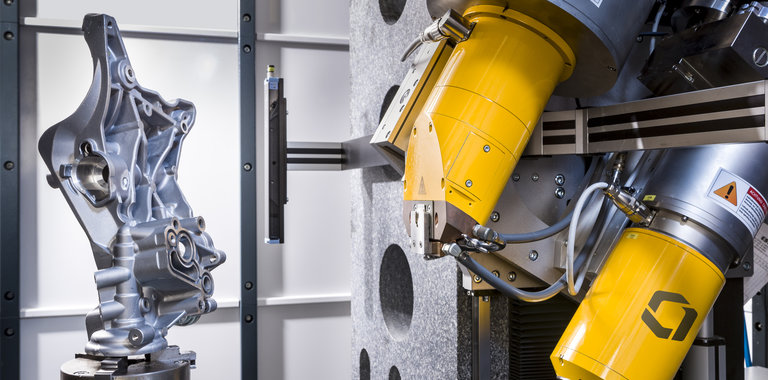
Estrategias de protección contra la radiación
Radiation protection (optimum distance) can be either a ribbon or rope and warning flags demarcating the area where radiation photographs are to be taken, or a concrete bunker with a door that automatically shuts off the X-ray equipment as soon as the door is opened. Both methods serve the same purpose: that is, to prevent unauthorized persons from entering the radiation area. A radiation area can be defined as an area where the radiation level exceeds the 10 μSv/h license value.
There are three ways to reduce the radiation intensity:
Installation of demarcation barriers at appropriate distances,
Installation of absorption barriers,
A combination of methods 1 and 2.
Distance
Since radiation obeys the inverse square law, the intensity of radiation diminishes as the square of distance
Distance increases.
Absorption barriers and distances
Whenever radiation penetrates a material, the absorption process reduces its intensity.
The amount of radiation is reduced by placing high-density materials (e.g., lead) around the radiation source.
The amount of transmitted radiation is then reduced. To determine the thickness of material required to reduce radiation to a certain level
Half Value Thickness (HVT).
The following table lists the lead half-value thickness values for different types of gamma sources
Examples
The distance required to reduce the 2.56 mSv/h measured at a distance of 1 meter to 10 μSv/h is
According to the inverse square law, the distance required is 2560/10 = 16 meters. To achieve the same effect
To achieve the same shielding effect, the number of HVTs is calculated as follows:
- The required reduction in intensity is 2560 / 10 = 256 x
- The number of high voltage transmitters is, logarithmic 256 / log 2 = 8
The above example shows that increasing the distance to 16 meters, or placing 8 high voltage emitters as shielding material, reduces the intensity of 2.56 mSv/h to
10 μSv/h.
Shielding material. If these two methods cannot be used alone, a combination of the two may be considered.
A combination of the two methods can be considered.
Waygate Technologies offers medical suppliers assistance with industrial X-ray


